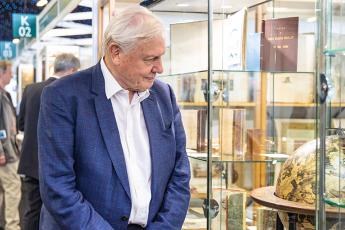News & Updates
"Bibliomaniacs in Battersea" - The Times Literary Supplement writes of the London Rare Book Fair

When the fair first started in 1957, Attenborough was abroad filming along the Great Barrier Reef; this year he is cutting the tape, officially opening the event’s sixty-first outing. He is, as he put it, “unabashedly a collector”; he bought his first rare book when he was fifteen. It was On the Origin of Species, naturally – not the first edition but the sixth, in which Darwin introduced the word “evolution”.
To a collector, the specifics of different editions matter deeply, far more than they do to the general reader. They are an important element in the complex of features that determine how well a book fits one’s collection, how badly one wants it. Walter Benjamin observed that “the period, the region, the craftsmanship, the former ownership – for a true collector the whole background of an item adds up to a magic encyclopedia”. As Attenborough notes wryly, one doesn’t necessarily collect books in order to read them.
This year the fair takes place in an exhibition centre in the middle of Battersea Park. It is vast. A hundred and eighty bookdealers have set up stalls, transporting their wares from Vienna, Vancouver, Sydney, San Francisco, among other places. These include your straightforward high-end treasures: an exquisite hand-coloured first edition of Vesalius, yours for £850,000; a Kelmscott Chaucer, £60,000; various early Shakespeare folios. There are also association copies: Alan Rickman’s Harry Potterbooks; one of the Thomas the Tank Engine stories signed by Ringo Starr. A fair few of the dealers specialize in modern first editions: Woolf’s Kew Gardens, set, printed and stitched by the Woolfs themselves; Joyce’s Ulysses in its Greek blue covers. It is like walking around the gallery of a major library, with the added thrill of knowing that, if you just sold one your vital organs, you might take home one of the exhibits.
